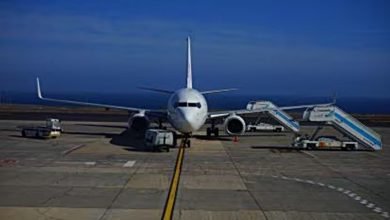Air India tops up its mega 470-aircraft order with another 100 Airbus jets | Business News

In what may be seen as the Tata group’s growing confidence and ambition in India’s high-potential aviation sector, Air India has topped up its $70-billion order for 470 aircraft placed last year with another 100 Airbus jets, taking the cumulative order size to 570 planes. New aircraft orders are critical to Air India’s fleet expansion and modernisation plan, which the airline embarked upon after the Tata group acquired it from the government in January 2022.
Air India’s 470-plane order with both major aircraft manufacturers Airbus and Boeing also included options to acquire up to 370 additional aircraft. In large aircraft orders, purchase options allow carriers to buy additional planes in future at a previously agreed-upon price and schedule. The airline did not divulge financial details of the latest 100-aircraft order.
The 100 new Airbus aircraft ordered by Air India include 10 wide-body A350 planes and 90 narrow-body A320 family jets, including the A321neo. The 470-aircraft order, the world’s largest aircraft order at the time of its announcement in February 2023, was made up of 250 Airbus planes and 220 Boeing planes. With the latest top-up, Airbus now makes up for 350 of the 570 planes that will be deployed by Air India and its no-frills arm Air India Express.
“With India’s passenger growth outpacing the rest of the world, its significantly improving infrastructure and an aspirational young population increasingly going global, we see a clear case for Air India to expand its future fleet beyond the firm orders of the 470 aircraft placed last year. These additional 100 Airbus aircraft will help to position Air India on the path to greater growth and contribute to our mission of building Air India into a world-class airline that connects India to every corner of the world,” said Tata Sons Chairman Natarajan Chandrasekaran, who is also the chairman of Air India.
Under government control, Air India faced significant financial stress, which did not allow the airline to meaningfully expand or even modernise its fleet. The Tata group wants to transform the airline into a carrier of global repute by significantly expanding its fleet and network and sprucing up the product offering. These large aircraft orders are set to play a pivotal role in that journey.
Air India has so far received six aircraft—all A350s—from its Airbus order, and the airline’s order book now at 344 planes. Of the 250 Airbus aircraft ordered by Air India last year, 40 were A350s, while the remaining 210 were A320 family jets. Of the 220 Boeing aircraft ordered by Air India, 35 737 MAX jets have already been delivered.
Air India on Monday also announced it has selected Airbus’ Flight Hour Services-Component (FHS-C) to support the maintenance requirements of its growing A350 fleet. The new materials and maintenance contract will help Air India to optimise the reliability and performance of its A350 fleet, with comprehensive engineering services and integrated component services including on-site stock at Delhi provided by Airbus.
Story continues below this ad
Over the past couple of years, Indian airlines—Air India, IndiGo, and Akasa Air—grabbed global attention by placing orders for hundreds of new aircraft. A few months after Air India announced its 470-aircraft order, India’s largest airline IndiGo wrested the title of placing the world’s largest commercial aircraft order from Air India by ordering 500 Airbus A320 family planes. Then in April this year, IndiGo placed an order for 30 A350 aircraft. In January this year, Akasa Air placed a firm order for 150 Boeing 737 MAX family planes, taking its total order size for the aircraft to 226.
In all, Indian airlines are now estimated to have nearly 1,300 aircraft on order. These are likely to be delivered till the mid-2030s. India is the world’s third-largest aviation market and is also among the fastest-growing major aviation markets globally. As compared to large mature aviation markets, the penetration of air travel in India is still insignificant, reflecting massive growth potential in the years to come.




